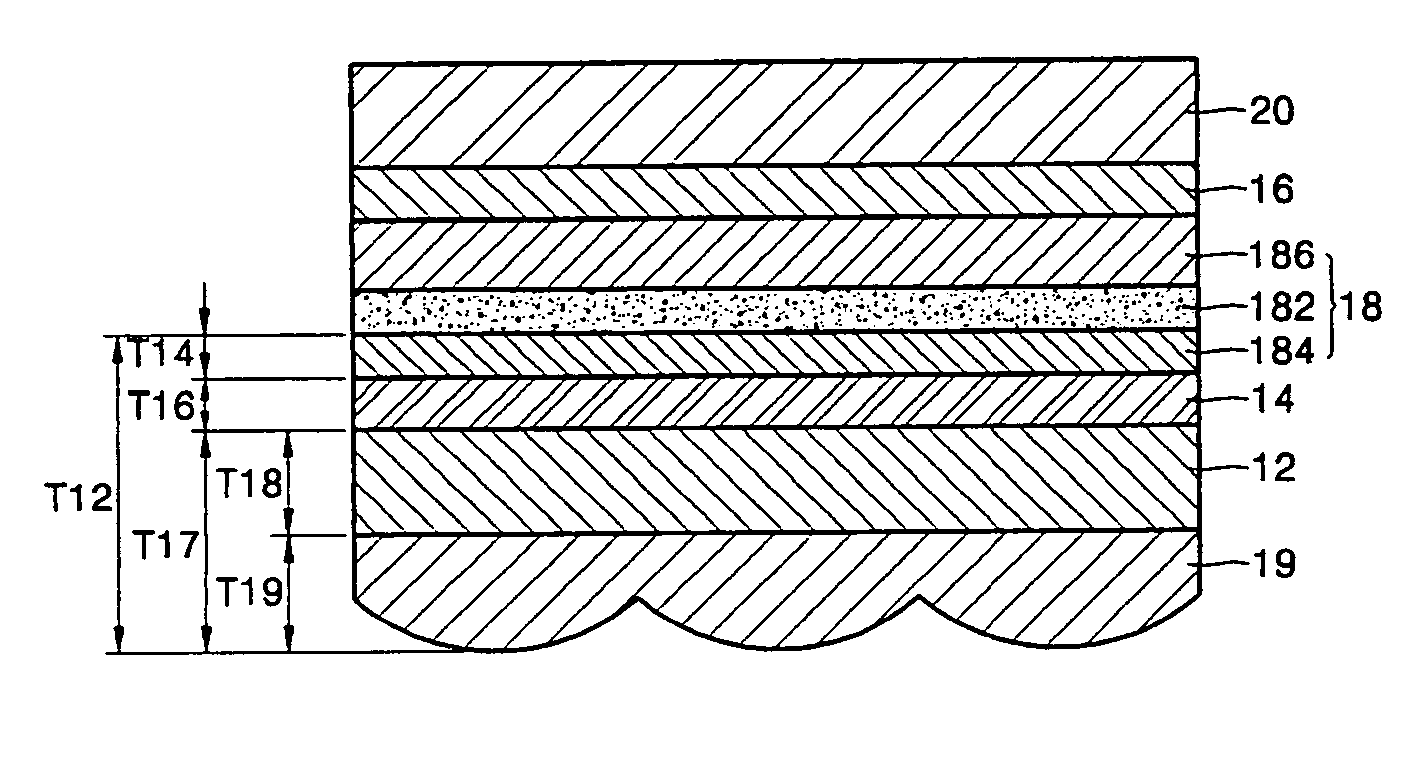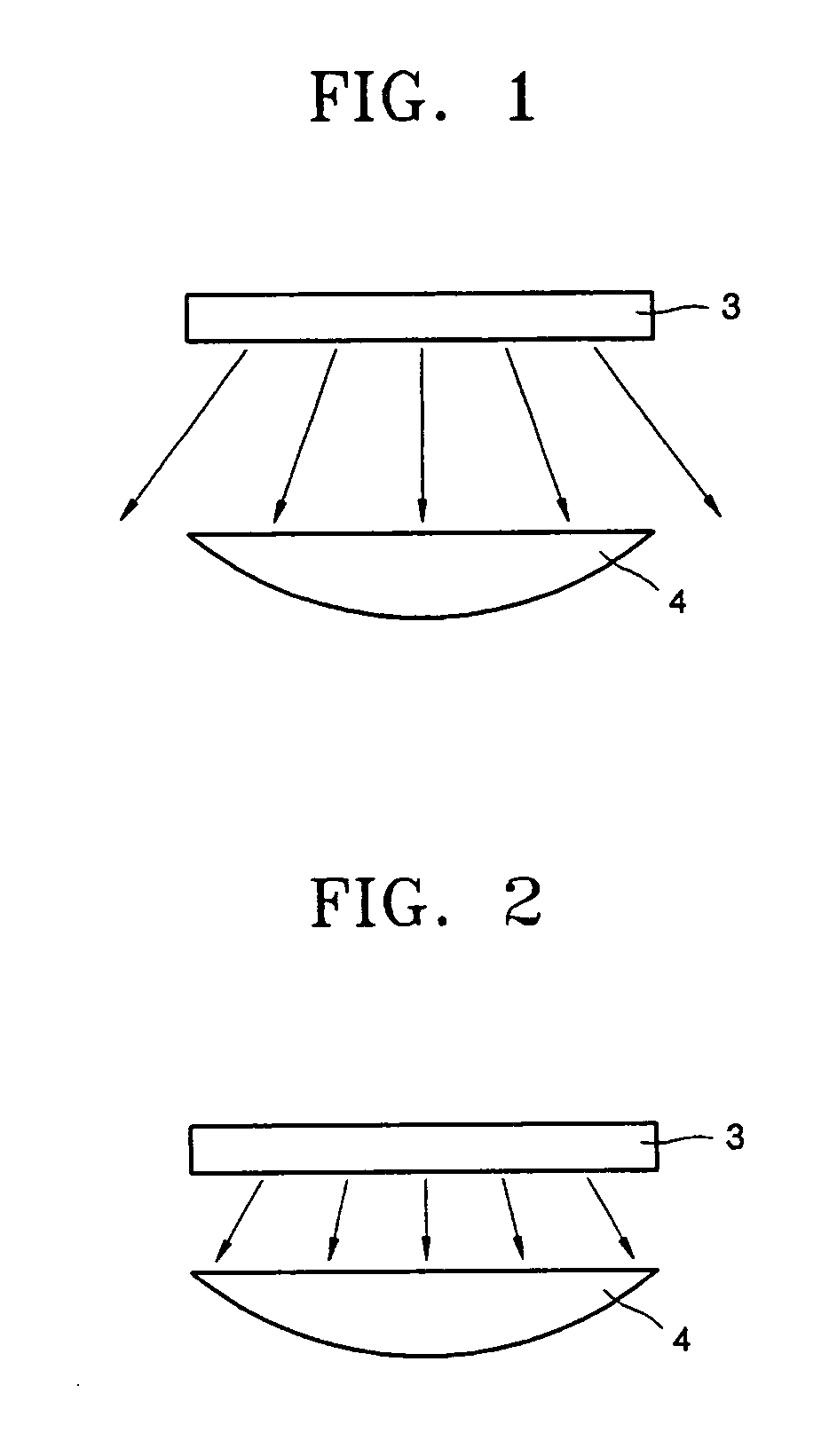Flat panel display device
a display device and flat panel technology, applied in the field of flat panel display devices, can solve the problems of reducing the light coupling efficiency, increasing the weight of the device, and reducing the life span of the battery and the self-luminant devi
- Summary
- Abstract
- Description
- Claims
- Application Information
AI Technical Summary
Benefits of technology
Problems solved by technology
Method used
Image
Examples
first embodiment
[0042] According to the flat panel display device of the present invention, the self-luminant device is the EL device, and the light emitted from the light emitting layer 182 propagates toward the substrate 12 for the back emission type. However, the emission type is not limited thereto, and the device can be the front emission type or dual emission type, and the self-luminant device does not have to be an EL device.
[0043] In the first embodiment of the present invention, a lens sheet 19 having condensing lenses is formed on the second surface of the substrate 12, and the lens sheet 19 can be made of a glass material having SiO2 or an epoxy based plastic material. In a case where the epoxy based plastic is used as the lens sheet 19, the refractive index thereof is similar to that of glass, which is the material of the substrate 12, and an epoxy based material is also used as an adhesive to attach the lens sheet 19 to the substrate 12, thus reducing the total reflection and improving...
second embodiment
[0054]FIG. 12 is a cross-sectional view illustrating the flat panel display device according to the present invention. In FIG. 12, the flat panel display device is a self-luminant device that is an EL device having a lens sheet and a substrate 32 formed integrally with each other.
[0055] If the transparent electrode is directly formed on the lens sheet and it is used as the substrate of the self-luminant device, the lens sheet and the substrates can be formed integrally with each other, the number of elements is reduced, and the process of manufacturing the device can be simplified. In addition, the distance T22 from the light emitting layer to the exterior portion of the condensing lens in the direction of propagation of the light can be set to be in the range of 50 μm-500 μm in order to prevent the sharpness of the image from being sacrificed. The flat panel display device of front emission type or dual emission type, in which the lens sheet and the sealing substrate are formed int...
third embodiment
[0056]FIG. 13 is a cross-sectional view illustrating a flat panel display device according to the present invention. As illustrated in FIG. 13, the flat panel display device is a self-luminant device of a front emission type organic EL device and the lens sheet 19 is formed between the light emitting layer 182 and a sealing substrate 39.
[0057] The organic EL device has a disadvantage of being prone to degradation by exposure to internal elements such as oxygen from the ITO and reaction between light emitting layer and the interlayer and exterior elements such as humidity, oxygen, ultraviolet rays, and fabricating conditions. Especially, the exterior oxygen and humidity severely affect the life span of the device, thus it is important to package the organic EL device well. Therefore, a protective layer 36 can be formed on the second electrode layer 16 of the organic EL device by depositing various kinds of organic and inorganic materials. Referring to FIG. 13, the lens sheet 19 is lo...
PUM
 Login to View More
Login to View More Abstract
Description
Claims
Application Information
 Login to View More
Login to View More - R&D
- Intellectual Property
- Life Sciences
- Materials
- Tech Scout
- Unparalleled Data Quality
- Higher Quality Content
- 60% Fewer Hallucinations
Browse by: Latest US Patents, China's latest patents, Technical Efficacy Thesaurus, Application Domain, Technology Topic, Popular Technical Reports.
© 2025 PatSnap. All rights reserved.Legal|Privacy policy|Modern Slavery Act Transparency Statement|Sitemap|About US| Contact US: help@patsnap.com



